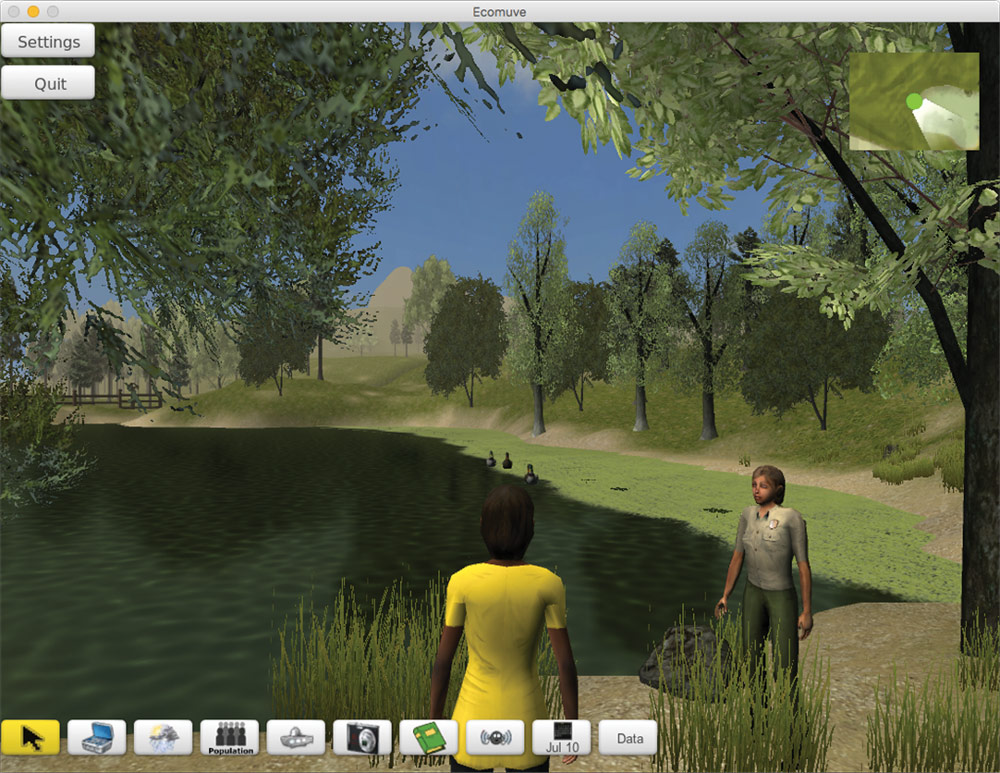Integrating Knowledge Across Virtual Worlds
Imagine your students are visiting a virtual pond to learn about ecosystems. Their challenge is to figure out why all the large fish in the pond have died. Students examine the flora and fauna and analyze their relationships to each other and to the fish. They consider how human activity or weather might affect the environment and the health of the fish. They walk around the pond, talk to people, and dive underwater to collect data. Their complete engagement in this virtual world carries over into classroom discussions, which are lively and full of data analysis, arguing from evidence, and talking through ideas.
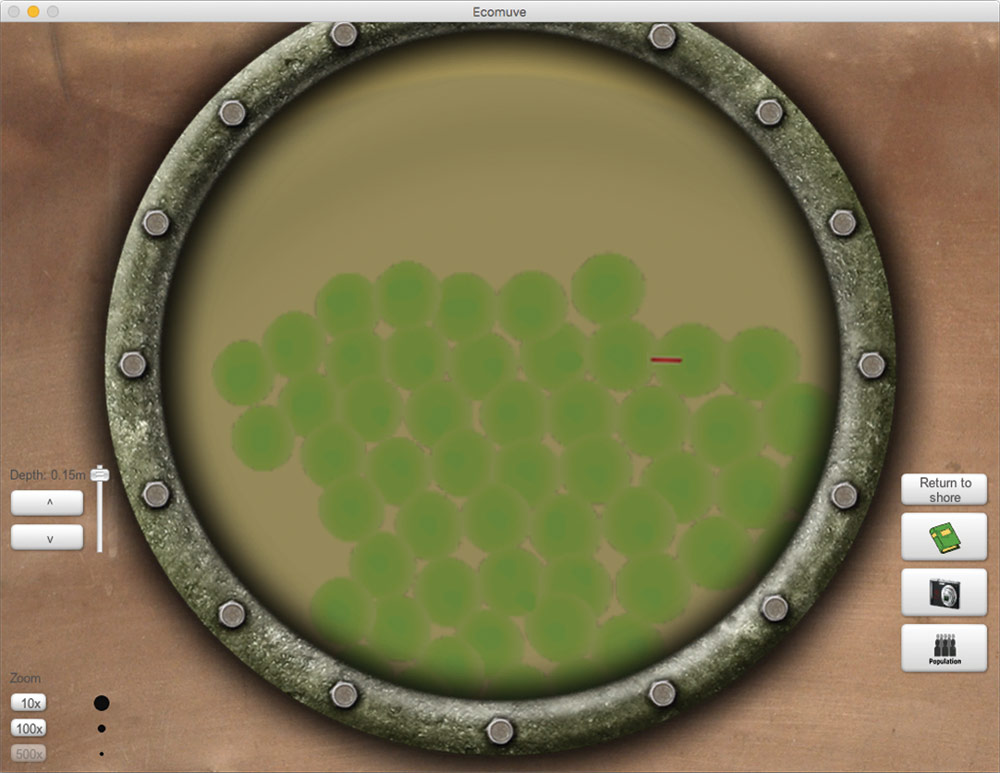
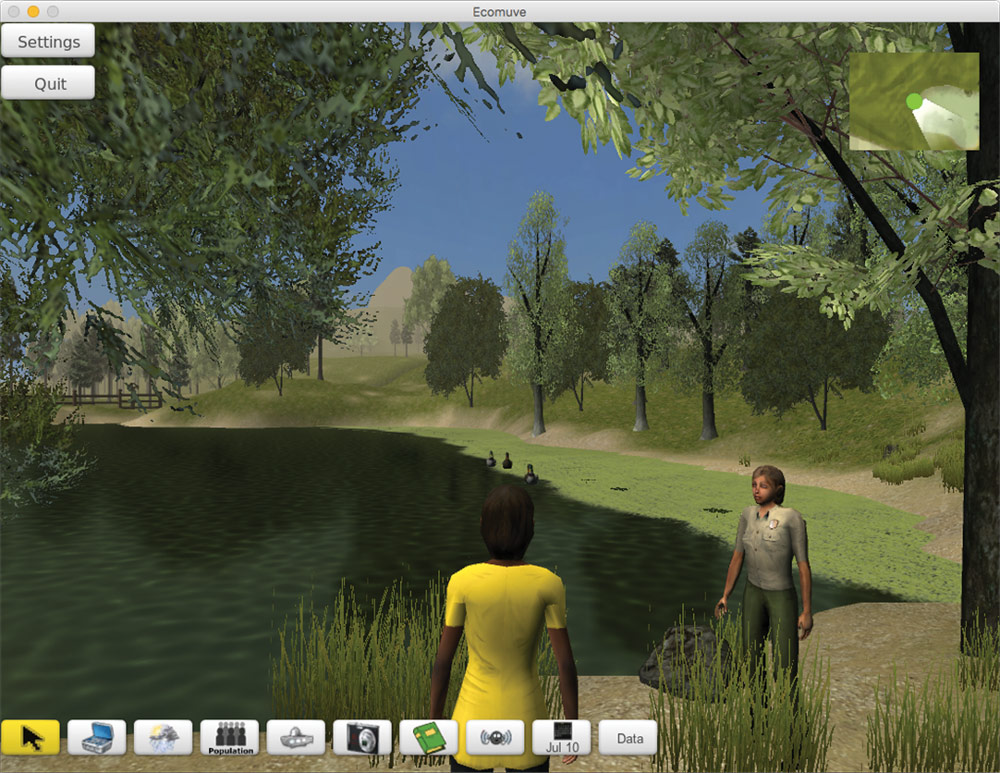
Later in the year, months after their visit to the virtual pond, your students are faced with a new challenge within a new virtual world. They must identify the sources of the poor air quality in this world. To do this, they need to determine the human and natural impacts on air quality, connect the flow of matter in the atmosphere with sources of pollutants, and understand how and why air quality changes over time.
Having discovered what killed the fish in the first challenge, students should have a general understanding of how systems and organisms interact. But will they remember and put that knowledge to work in the second challenge? This is the research question we are exploring.
How does understanding deepen?
The Towards Virtual Worlds that Afford Knowledge Integration Across Project Challenges and Disciplines project, funded by the National Science Foundation, is investigating under what conditions students remember something learned from an experience so that they can use it to solve a new challenge. Such remembering offers meaningful opportunities to integrate what they are learning across units and disciplines. Our goal is to learn how to design and use project challenges and their virtual worlds to support such knowledge integration.
Case studies
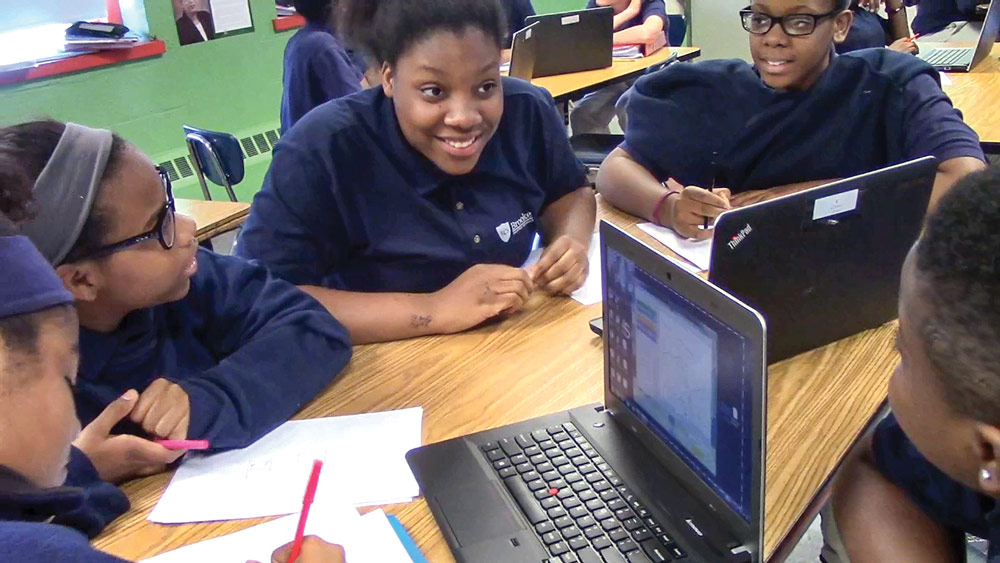
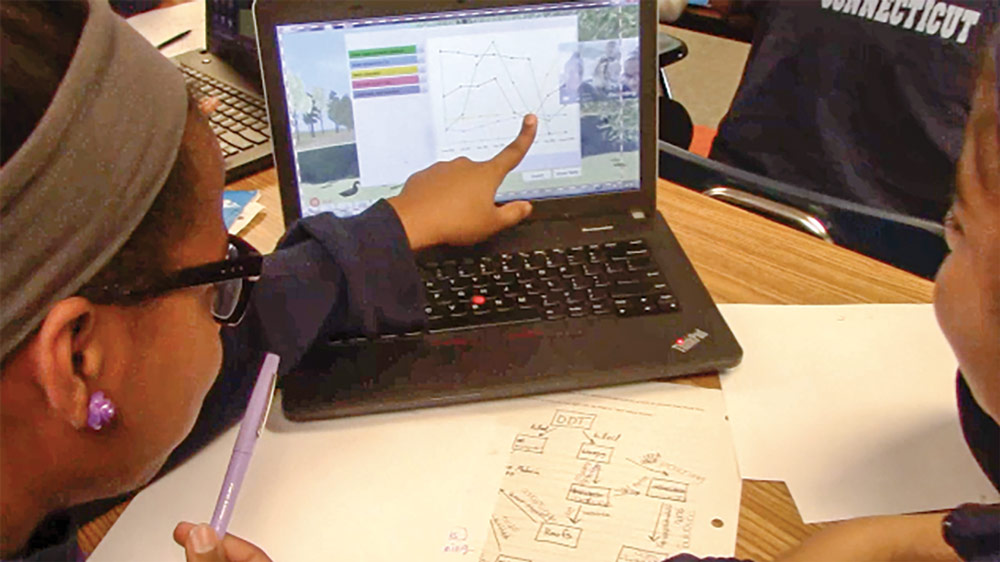
Our research focuses on what students take away and remember after solving a complex and engaging problem in a virtual world. What influences their learning and memories? By comparing what they remember to what they need to remember to make inferences in new worlds, we hope to develop preliminary design principles for virtual worlds that will prepare students to make connections across multiple topics.
We recently observed and interviewed students who were studying ecosystems using EcoMUVE, the virtual world introduced above (Figures 1 and 2). EcoMUVE was created by researchers at the Harvard Graduate School of Education, who allowed us to use their software for our investigation and connected us to a school where two teachers were integrating EcoMUVE into their ecosystems unit. We observed two sixth grade classes every day for two weeks. Students worked in pairs, and we used screencast software to capture what they did in the environment—ways they explored it, information about the plants and animals they observed, data they collected, and their hypotheses and explanations. We videotaped class discussions so that we knew what students were hearing from the teacher and from other students that might influence what they did and remembered. We also videotaped their final presentations.
We focused our observations on select pairs in each class to capture the discussions they had with each other and with small groups around them (Figure 3 and 4). These conversations reveal student thinking as they tried to solve the challenge. Two weeks after the unit was complete, we interviewed the students and asked what they remembered about using the software. A week after that, we interviewed them again and asked what they remembered about ecosystems and why the fish died.
We have begun to compile case studies of three student pairs in each class. Each case study will include the activities the students carried out in EcoMUVE and where they focused their attention as they addressed the challenge. We’ll make hypotheses about why the students remembered certain things, and analyze the relationships between the reasoning they do in the virtual world and what they remember. We will look across the case studies to identify similarities and variations in what influences what they remember.
What we are learning
Our early analysis provides some clues. First, all of the student pairs had very good memories of the explanations they came up with for the dying fish. This tells us that when they grapple with an engaging problem, they remember their explanations.
Second, the students remembered much of the data they had analyzed while exploring their hypotheses and coming up with explanations. During classes, small groups of students had rich discussions around data they had collected and spent a lot of time examining and trying to make sense of graphs of their data. Indeed, when students had a reason to use the data in charts and graphs, they were eager to collect data, use graphs to examine trends, and attempt to draw conclusions from the graphs. Additionally, students were able to use data as evidence for their explanations.
Giving students an exciting challenge in which they had to work hard to come up with explanations led to willing engagement in data collection and in data analysis. They remembered what they put a lot of effort into figuring out, and they came to understand the relationship between evidence and explanation.
What’s next?
Our next step will be to draw connections between what students experienced and what they remembered, especially focusing on what influences the richness of their memories. We will then develop hypotheses about the kinds of tools that might be included in virtual worlds to increase the probability that more students will build rich memories of their experiences and the phenomena they encounter. In the future, we hope to build virtual worlds that include those tools and continue our research efforts by learning how technology can help students use what they remember to integrate what they are learning across challenges, virtual worlds, content areas, and disciplines.
Janet Kolodner (jkolodner@concord.org) is chief learning scientist.
Amy Pallant (apallant@concord.org) is a senior research scientist.
Ken Wright (kwright@concord.org) is a research associate.
This material is based upon work supported by the National Science Foundation under grant IIS-1550902. Any opinions, findings, and conclusions or recommendations expressed in this material are those of the author(s) and do not necessarily reflect the views of the National Science Foundation.
